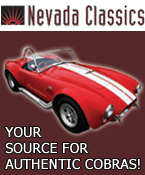I wrote this article on Talk Cobra and it helped folks to know what to prepare for if they go to a Race Track. And what they are looking for in their vehicle. Then how do you get their. We'll see how it goes.
Let's move on, well we've finished the build and have taken the car for a ride around the back roads and everything seemed to work out just fine..... now it's time to take KMP259 to the track and start the real test of the things we have done ......... We treat every time we go to a track like an experiment to find out what works and what doesn't, also will the changes we make respond with feed back that is correct or not correct.
So now I'm going to take you thru an outline of everything we do to go to the Track.
Not sure how to up load photos....

KMP 259 2nd Phase
1. Before the Track
a.Mount and Balance New Tires.
b.Check the circumference of the tires and set to the same number for Front axle and the Rear Axle.
c.Set the ride height on each corner
d.Weigh the car and set the corner weights based on the track you are going to attend.Also note what one turn on a corner spring will do to the weight of that corner and others, so you can make a calculated change at the track.
e.Align the chassis, all 4 corners, set to the Spec's of the Chassis builder


